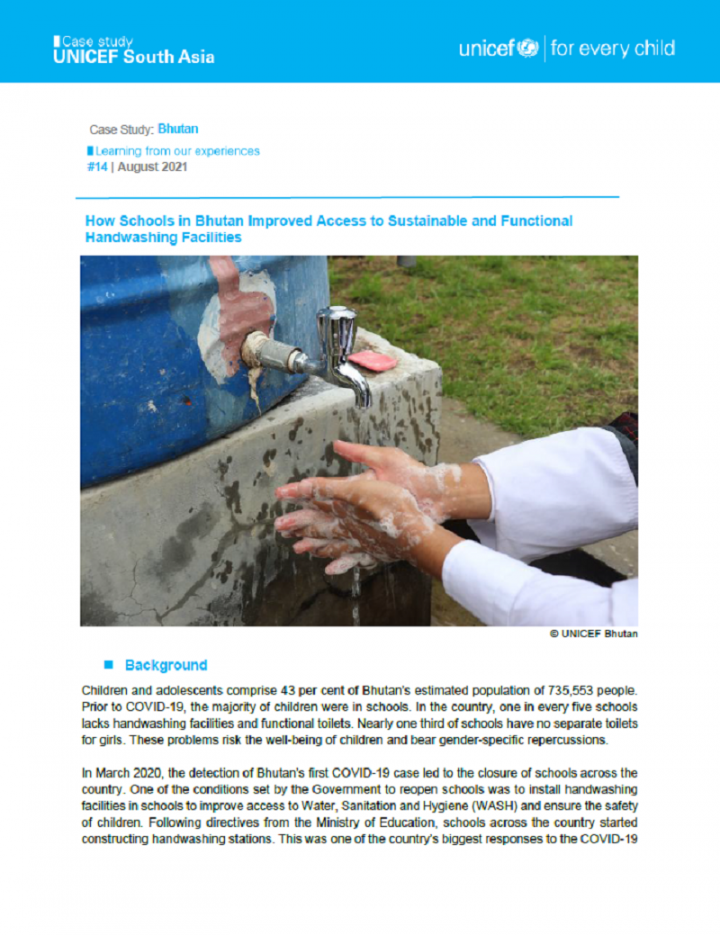How Schools in Bhutan Improved Access to Sustainable and Functional Handwashing Facilities
UNICEF (2021)

Published in: 2021
Pages: 3
Publisher:
UNICEF
Author:
UNICEF
Uploaded by:
SuSanA Admin
791 Views
6 Downloads
Children and adolescents comprise 43 per cent of Bhutan’s estimated population of 735,553 people. Prior to COVID-19, the majority of children were in schools. In the country, one in every five schools lacks handwashing facilities and functional toilets. Nearly one third of schools have no separate toilets for girls. These problems risk the well-being of children and bear gender-specific repercussions.
In March 2020, the detection of Bhutan’s first COVID-19 case led to the closure of schools across the country. One of the conditions set by the Government to reopen schools was to install handwashing facilities in schools to improve access to Water, Sanitation and Hygiene (WASH) and ensure the safety of children. Following directives from the Ministry of Education, schools across the country started constructing handwashing stations. This was one of the country’s biggest responses to the COVID-19 pandemic. In the process, the project helped address water shortage problems in schools which led to an overall improvement of WASH programmes in schools.
Bibliographic information
UNICEF (2021). How Schools in Bhutan Improved Access to Sustainable and Functional Handwashing Facilities. UNICEF
Filter tags
Case studies in other formats English South Asia















